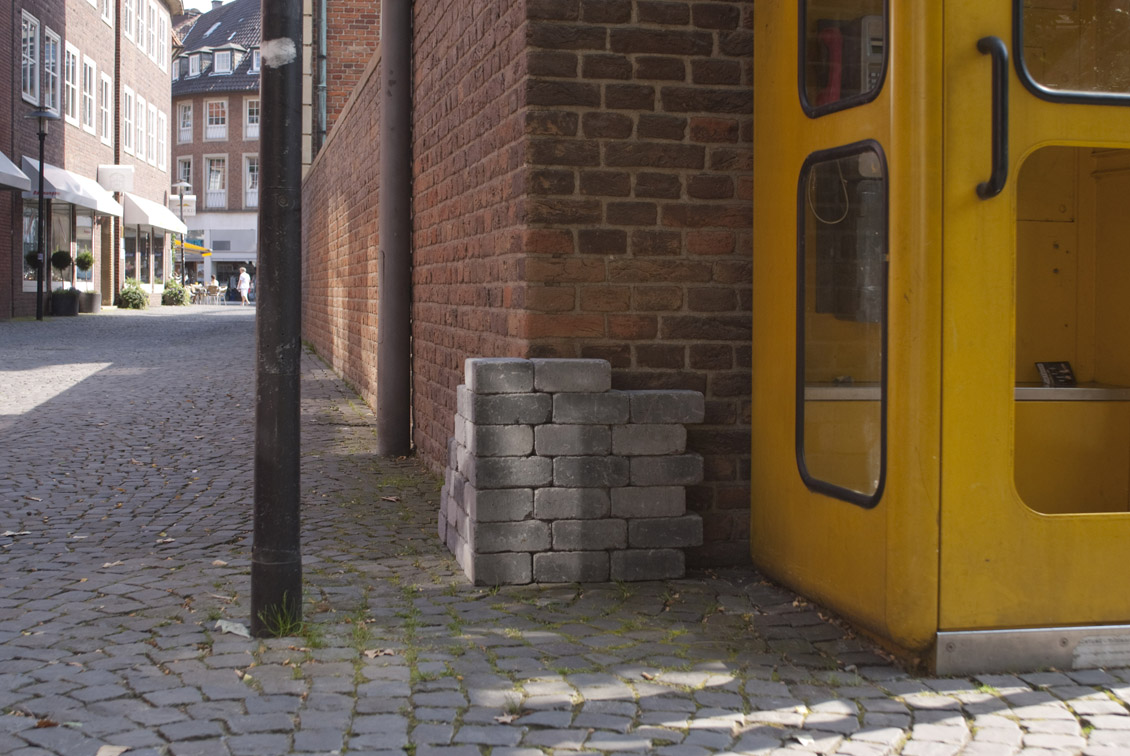Aequivalenz. Shattered Stones, Coventry (2015) references Metzger’s Aequivalenz. Shattered Stones (2007), based on Coventry and Münster’s shared experiences of destruction by bombing in World War II, and commissioned for Sculpture Projects Münster 07, in Germany. To make the work, which took place every day for the 107 days of the project, an assistant collected groups of stones from a central location in the city and transported them by forklift truck to a different location.
He then deposited and arranged them in specific configurations generated by a computer program to reflect the random destruction caused by falling bombs. The new work commissioned for the Herbert features bricks made in Coventry and images of the Münster installation, as well as reproductions of a Luftwaffe map of Coventry showing targets for bombing, and a map showing RAF attacks on Germany.
Metzger’s work is informed by his personal experiences; he was born into a family of Orthodox Jews in Nuremburg in 1926, and following the arrest and deportation of a number of his family members under the Nazi regime, he and his brother escaped to England on the Kindertransport. In the 1960s he was an anti-war and anti-nuclear activist and, in response to his awareness of the destructive risks posed by society’s increasing dependence on technology, he developed the notion of Auto-Destructive art, which eventually gave its name to the Destruction in Art Symposium in London (1966) and New York (1968). Auto-destructive art soon gave way to auto-constructive work, which invited ‘change, movement and growth’.
Aequivalenz. Shattered Stones, Coventry went on show at the Herbert in November 2015, to coincide with the 75th anniversary of the bombing of the city in 1940, when other commemorative displays and events also be took place.


